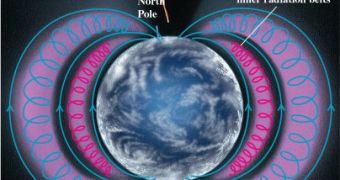In physics, magnetism is one of the phenomena by which materials exert an attractive or repulsive force on other materials. Some well known materials that exhibit easily detectable magnetic properties are nickel, iron, some steels and the mineral magnetite.
However, all materials are influenced to greater or lesser degree by the presence of a magnetic field and humans have learned to use it to their benefit, in countless applications.
The earliest literary reference to magnetism lies in a 4th century BC Chinese book called Book of the Devil Valley Master "The lodestone makes iron come or it attracts it."
Guess who invented the magnetic compass...
Modern day applications are widespread and cover almost all areas, but we can also benefit from it, or, on the contrary, be affected by it, without lifting a finger.
Sorting ferromagnetic materials in mining operations, cranes equipped with powerful electromagnets, magnetic levitation trains, are just a few of the well known applications.
Magnetostriction, magnetohydrodynamics, magnetic liquids... If they don't ring a bell, here are some explanations.
Magnetostriction is the production of ultrasounds by placing on a nickel bar a coil, powered by alternative current (AC) of various frequencies. Using the electrical current, the bar starts vibrating along its axis, generating ultrasounds, whose frequencies depend on the dimensions of the bar and on the current's frequency. Using magnetostriction one can build devices for metals cold gluing and special filters for radiotrasmitters, for enhanced selectivity.
Magnetohydrodynamics is obtaining electrical energy by using a plasma jet, (produced by burning methane a coal dust at high temperatures), while blowing extra oxygen in a special tunnel fitted with special electrodes on the inside and powerful electromagnets on the outside to produce an intense magnetic field in the tunnel. The electromagnets are powered in part by the same energy that is produced by the device. They could represent an energy source of the future.
Magnetic liquids are made of very fine iron particles suspended in oils or water. By applying powerful external magnetic fields, the particles can be dragged along with the liquid and used in irrigation systems. Using "magnetized water" on cereal crops or vegetables can speed up the growth process and the product mass.
In medicine, magnetic treatments rely on the fact that hemoglobin (oxygen-transporting metalloprotein in the red blood cells of the blood in vertebrates and other animals), contains an iron nucleus in its molecule. Using electromagnets with a direct current (DC), and alternatively changing the polarity of the magnets, improves the flood flow inside the organism, thus helping patients with circulatory problems.
It seems that animals make use of magnetic fields also, even though they don't possess the technology to harness them more efficiently.
Instead, they use special organs to detect Earth's magnetic field lines that they use for orientation. Migratory birds, fish, horseshoe crabs and even dolphins use them to navigate the oceans, find warmer or cooler waters and their birthplace where they will mate. Some scientists have speculated that whales stranding on shores are the result of sudden local changes in the magnetic field, which makes them mistake coastlines for their usual traveling corridors.
So, it seems that magnetism is and will continue to be a part of our lives for as long as we live, but its main benefit is the fact that the magnetosphere shields the surface of the Earth from the charged particles of the solar wind that can literally wipe out all life in this world, thus enabling a multitude of lifeforms to appear and flourish on its surface.

 14 DAY TRIAL //
14 DAY TRIAL //